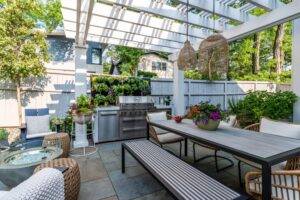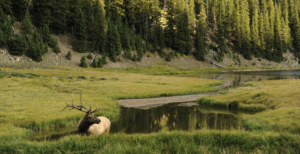
If you’re a long-time outdoor recreation enthusiast, you would probably agree that the more time you spend in nature, the better you feel. You may take it to extremes, camping outdoors as often as possible, even when your family protests.
Well, if you’re ready to take the next step towards integrating your home life and your outdoor activities, you might consider building a log cabin in the woods. It is a great way to satisfy your cravings for the great outdoors.
Building a log cabin is also a very ambitious project to plan. Don’t worry, though—we’re here to help. Before you embark on your log cabin building adventure, read through this quick guide. We’ll tell you how to prepare and give a general rundown for putting the pieces together.
Some stuff you’ll want to get help from. Don’t be afraid to check with a local roofing contractor to get the best advice or bids from them, but the rest is something you can attempt Paul Bunyan style.
1. Before You Get Started
Building a log cabin is a strenuous and complicated task that takes a long time to complete. It’s essential to do as much planning as possible beforehand. Otherwise, the results could be disastrous, wasting a lot of time and money.
Ensure you have a detailed floor plan drawn up in advance to account for all the rooms, doors, windows, and any other features. This blueprint will also help you plan your budget and determine what materials you’ll need and how much of them.
Also, make sure you check local ordinances, building codes, and zoning laws for your area before you start building on your land to know for sure that everything is above board.
2. Which Logs Are Best to Use?
It takes a lot of logs to build a log cabin, and not all logs will do well in your environment. To get the correct logs for your building project, you’re going to want to find suitable trees. Then, fell them yourself with a chainsaw, trim them to the appropriate dimensions, seal the ends with paraffin wax and allow them to dry.
When selecting trees for your cabin, you want to find ones with a diameter of between 10 and 14 inches that are relatively straight and without much tapering. Logs from cedar, spruce, and pine trees are generally best for cabin building, although this may vary depending on what is available in your area.
3. Putting It All Together
When you’re ready to get started building, you have to start with the foundation. Once you’ve built a sturdy base, you can install the first four logs to hold up the floor. These are “sill logs,” and they should be the best logs you’ve foraged.
After installing the floor on top of the sill logs, you’re ready to start constructing walls. To do this, you’ll have to carve notches into each log so that they can nest easily inside one another and interlock to form a solid surface. There are many different notching systems commonly used, so research which method you prefer.
4. Doors, Windows, and Roofing
When you are building the walls, there’s no need to account for window and door openings. Just build the house’s shell and carve out spaces for the doors and windows with a chainsaw later. You can install the windows and doors of your choosing.
To finish off the basic structure, you need to add on a roof! Metal roofs are a popular choice for log cabins. If you are inexperienced with roof installation, seek out contractors in your area who can assist you with this task.
Conclusion
Building a log cabin is an undertaking that requires planning and background research. Hopefully, this general overview of the process helped give you an idea of what to expect. But with luck, grit, and ingenuity, you’ll be one log closer to living outdoors year-round.







